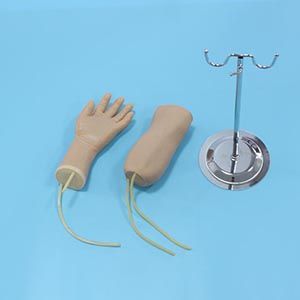Venipentesis is an important skill in medical training, especially for doctors and nurses, as this technique is directly related to the treatment results of patients. However, venipunction may seem simple, but it can actually be challenging, especially when dealing with infants, the elderly, or patients with special medical conditions. In order to help medical staff better master this technology, more and more hospitals and training institutions have begun to use venipunction training equipment, especially the combined training model **. So why choose a combined training model instead of the traditional single-site model? Let's explore.
What is a single site model? What are the limitations?
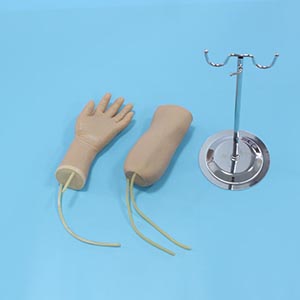
Combined hand and elbow vein training model
The single-site training model, as the name suggests, focuses on the venipuncture training that simulates a specific site. For example, some traditional training models only simulate veins in the hand or elbow, and students can practice vein positioning, puncture techniques, and infusion operations repeatedly on these models.
Although the single-site model is very effective in basic training for beginners, because the veins in the hand are clearly located and relatively shallow, it is suitable for beginners to master basic skills. But the problem is that venipuncture in reality is much more than just the hand or elbow. The limitations of the single-site model become apparent when veins are difficult to reach or other sites need to be pierced.
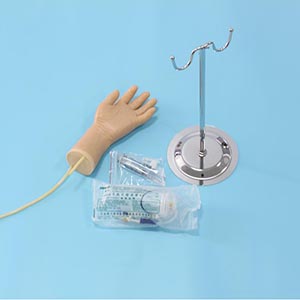
Limitations of the single site model:
1. Limited training scope: venipuncture can only be trained in a certain part, and the challenges of other complex parts cannot be simulated.
2. Poor adaptability: In the clinical environment, vein locations and conditions vary from patient to patient, and it is difficult to meet the diverse needs of a single site training.
3. Lack of comprehensiveness: medical staff need to deal with different puncture sites, and a single site model may not be able to cultivate their comprehensive response ability.
Why choose a combined training model?
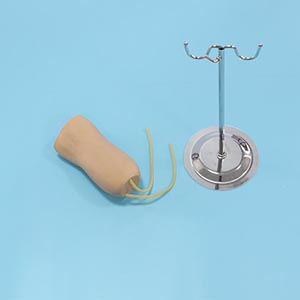
The combined training model is designed to overcome the limitations of the single-site model by simulating the venipuncture operation at multiple sites, usually including the hand, elbow, ankle, etc. With this model, medical staff can be more fully trained and master puncture techniques for different vein locations.
Advantages of the combined training model:
1. Multi-part training: Students can practice venipentesis in different parts such as hands, elbows and ankles on a model at the same time to improve their ability to cope with a variety of situations.
2. More realistic simulation: The combined model can better simulate the puncture difficulty of patients in different postures, body types and blood vessel conditions, and help students cope with complex clinical puncture tasks.
3. Improve comprehensive ability: the training is no longer limited to a single part, students can make flexible changes in the face of different parts, and improve the practical operation ability.
4. Improve training efficiency: multiple parts can be covered in one training, saving students' time, reducing equipment switching, and improving training efficiency.
Data support: The effect of a composite model
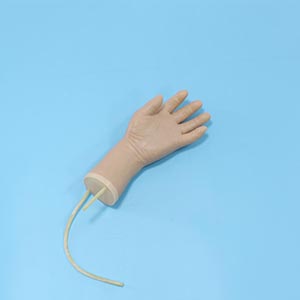
Combined hand and elbow vein training model
What is the effect of using composite-based training models? According to some research data, the success rate of medical staff who choose the combined training model is significantly improved in the actual operation. For example, one study of nurses showed that after 20 exercises using the combined venipuncture training model, the nurses' puncture success rate increased from 70% to more than 90%. This result not only shows that the combined training model can significantly improve the puncture skills of medical staff, but also reflects its important role in clinical training.
Another study also showed that the combined training model helped participants adapt more quickly to the needs of different patients, especially in the face of deep venous puncture or more difficult puncture site, to complete the procedure with more confidence. The research data showed that after intensive simulation training of the combined training model, participants were able to reduce the medical risks caused by puncture failures.
How does the Combined training Model improve the overall quality of care?
Choosing the combined training model can not only improve the skill level of medical staff, but also have a positive impact on the overall medical quality. Through efficient simulation training, medical staff can reduce the probability of puncture failure, thereby reducing the risk of patients and improving the success rate of treatment. In addition, the combined model can shorten the learning curve of healthcare professionals, allowing them to adapt more quickly to the changing clinical environment, and provide patients with more accurate and safe care.
Conclusion: Improve skills and ensure safety
In modern medical training, venipunction is one of the necessary skills for every medical staff, and it is very important to choose the right training model. By selecting the combined training model , medical staff can not only perform puncture exercises in a variety of sites, but also improve their resilience in the face of complex situations. This all-round and multi-angle training method not only helps students improve their skills, but also provides a more powerful guarantee for the treatment safety of patients.

